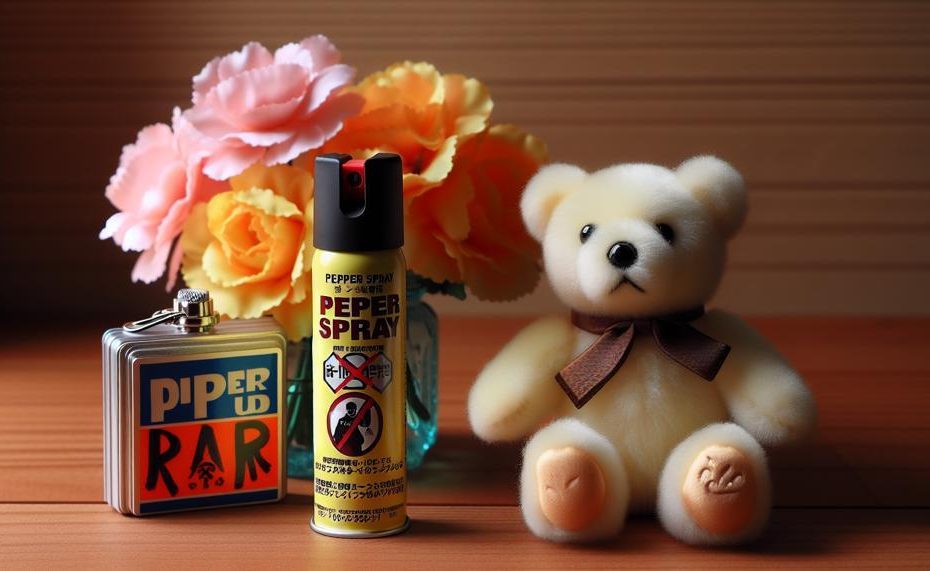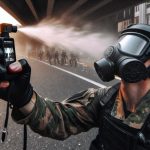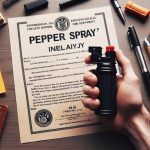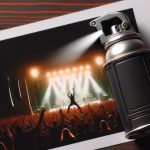Imagine this: you’re trekking through the stunning wilderness, soaking in the sights and sounds of nature. Suddenly, you turn a bend and find yourself face-to-face with a massive bear. Your heart races, and your palms sweat as fear takes over. But fear not, because if you have pepper spray on hand, you may just have a fighting chance.
Pepper spray has long been hailed as an effective defense against bears, but is it truly reliable? In this blog post, we’ll delve into the world of pepper spray and its effectiveness against one of nature’s most formidable creatures. Get ready to discover:
- The science behind pepper spray and how it affects bears
- Real-life accounts of people successfully using pepper spray against bears
- Tips for using pepper spray properly in bear encounters
- Common misconceptions about pepper spray and its effectiveness
- Alternatives to pepper spray for those who prefer non-lethal options
So, lace up your hiking boots and get ready to learn all about using pepper spray against bears. Because in the great outdoors, knowledge is your greatest defense. Let’s dive in.
Contents
- 1 Does pepper spray work on bears?
- 2 What is Bear Spray?
- 3 What is Pepper Spray?
- 4 How Does Bear Spray vs. Pepper Spray Work?
- 5 What Are the Active Ingredients in Bear Spray vs. Pepper Spray?
- 6 What Are the Differences Between Bear Spray and Pepper Spray?
- 7 Pros and Cons of Bear Spray and Pepper Spray
- 8 Bear Spray vs. Pepper Spray: Which is More Effective?
- 9 Conclusion
Does pepper spray work on bears?
| Bear species | Effectiveness | Considerations |
|---|---|---|
| Black bears | Somewhat effective | May deter some black bears, but repeated applications may be necessary |
| Brown bears | Less effective | May cause temporary discomfort, but is unlikely to stop an attack |
| Polar bears | Not effective | Polar bears have thick fur and a thick layer of fat, which makes them largely immune to pepper spray |
Environmental and usage factors:
- Distance: Pepper spray is most effective when used at close range, within 10 feet. If you are too far away, the spray may not have enough time to take effect before the bear reaches you.
- Wind: The wind can blow the pepper spray away from the bear, making it less effective. If there is a strong wind, try to use pepper spray from a downwind position.
- Bear’s fur: The thickness and density of a bear’s fur can affect the effectiveness of pepper spray. Bears with thicker fur, like polar bears, are less susceptible to pepper spray than bears with thinner fur.
- Bear’s age and experience: Pepper spray is more likely to deter younger, less experienced bears than older, more seasoned bears. Older bears may have learned that pepper spray is not a serious threat.
- Bear’s motivation: A bear that is acting out of fear or hunger is more likely to disregard the effects of pepper spray and carry out its attack.
Usage tips for pepper spray on bears:
- Aim for the bear’s face: The bear’s eyes, nose, and mouth are the most sensitive areas to pepper spray. If you can, try to aim the spray directly at these areas.
- Spray in short bursts: Don’t hold down the spray button for too long. Short bursts of pepper spray are more effective than a continuous stream.
- Carry multiple canisters: A single canister of pepper spray might not be sufficient to deter bears. If you are in bear country, carry multiple canisters of pepper spray so that you can use them if necessary.
- Practice using pepper spray: The best way to ensure that you can use pepper spray effectively in a bear attack is to practice using it before you need it. There are many pepper spray training courses available that can teach you how to use pepper spray safely and effectively.
What is Bear Spray?
Bear spray and regular pepper spray are two self-defense tools with distinct differences.
While both may be used for protection, their intended targets and strengths vary significantly. Bear spray is specifically designed to deter bears, while regular pepper spray is meant for use against humans.
This is due to the different reactions of these two species to the chemicals in the sprays.
Bear Spray:
- Developed specifically to combat bear attacks
- More potent and powerful than regular pepper spray
- Permitted in Canada for self-defense purposes
Regular Pepper Spray:
- Intended for use against humans
- Weaker in comparison to bear spray
- Considered illegal in Canada
The primary contrast between bear spray and regular pepper spray is their intended purpose. Bear spray is created to ward off bears, whereas regular pepper spray is intended for use against humans. This is because bears react differently to the chemicals in the spray compared to humans.
In terms of strength, bear spray tends to be more powerful and potent than regular pepper spray as it must be strong enough to stop a charging bear. Regular pepper spray may not be effective in halting a bear’s attack.
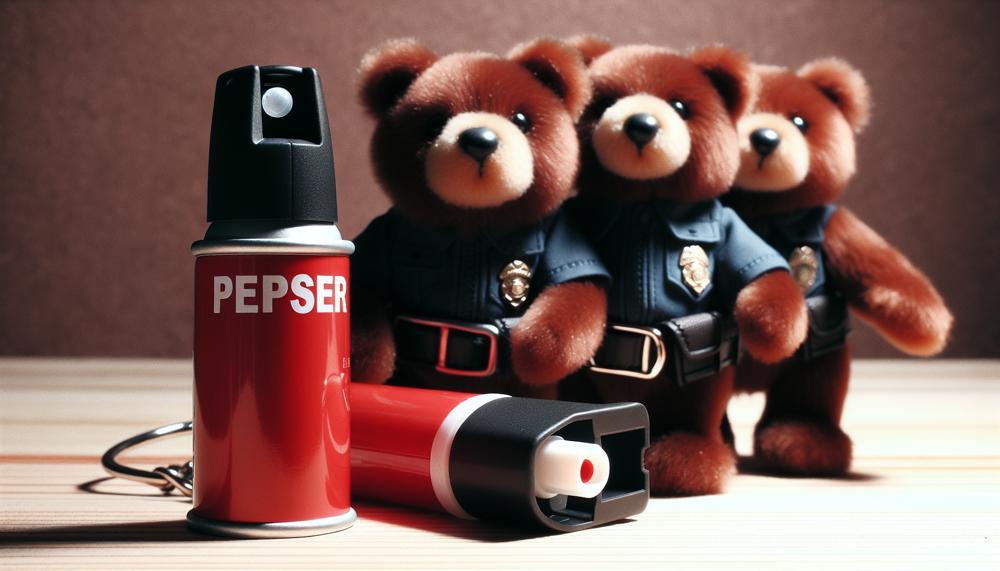
Furthermore, bear spray is legal in Canada while regular pepper spray is not. This is because the latter is classified as a weapon and can only be carried by law enforcement officials in Canada. However, bear spray is allowed as a deterrent against aggressive wildlife.
What is Pepper Spray?
Pepper spray, a popular self-defense tool against bears, contains a powerful compound called capsaicin, derived from chili peppers. This chemical is what makes pepper spray so effective and causes intense pain and temporary blindness when sprayed on an attacker.
When facing a bear, this discomfort can be enough to deter them and give you time to safely escape the situation.
| Capsaicin | The main active ingredient in pepper spray, capsaicin, is derived from chili peppers and is responsible for causing intense pain and temporary blindness when sprayed on an attacker. |
| High concentration | For optimal protection against bears, it is recommended to choose a trusted brand with a high concentration of capsaicin. This ensures its effectiveness against larger animals like bears. |
| 10-15 feet range | When selecting bear spray, make sure it has a range of at least 10 feet. This provides enough distance between yourself and the bear for safe usage. |
| Compact size | Consider the size of the bear spray for easy accessibility. A compact size allows for convenient carrying while hiking or camping, ensuring it is readily available in case of an emergency. |
| Specific formulations | Bear spray has specific formulations designed to be effective against large animals like bears. These formulations have a higher concentration of capsaicin and may also contain other ingredients that deter aggressive animals. |
Furthermore, it is important to note that pepper spray should not be solely relied on for protection against bears. It is best used in conjunction with other safety measures when in areas where bears are present.
How Does Bear Spray vs. Pepper Spray Work?
Bear spray and pepper spray, both containing OC (oleoresin capsicum) as their active ingredient, serve different purposes. Bear spray is formulated to deter bears and other large animals, while pepper spray is intended for use against humans. This results in notable differences in their composition and effects when used for self-defense.
| Criteria | Bear Spray | Pepper Spray |
| Strength | More potent with a maximum OC content of 2% | Typically contains 1-1.33% OC |
| Legal Regulations | Considered a pesticide and legal everywhere | Legal in most states, with varying regulations |
| Range and Dispersal Pattern | Longer range and wider dispersal pattern for use against bears | Narrower range and more focused dispersal pattern for use against humans |
| Physical Harm | Potential for lasting damage due to stronger potency | Less potential for lasting damage due to lower potency |
| Format and Portability | Bulky canister with limited portability due to size and weight constraints | Compact size for easy carrying and deployment in various formats (spray, gel, foam) |
When it comes to self-defense, bear spray and pepper spray have significant differences in their intended targets, potency, and delivery methods.
- Target: Bear spray is specifically designed to deter bears and other large animals, while pepper spray is intended for use against humans. This means that while both contain OC, they are formulated to have different effects on their respective targets.
- Potency: Bear spray is typically stronger and more potent than pepper spray, with a maximum OC content of 2% compared to 1–1.33% in civilian pepper sprays. However, the potency of a spray depends on the strength of the OC, not just its percentage volume. This means that even with a lower percentage of OC, bear spray can still be more potent than pepper spray.
- Delivery Method: Due to their different intended targets, bear spray and pepper spray have different delivery methods. Bear spray has a longer range and wider dispersal pattern, making it more effective against bears and other large animals. Pepper sprays, on the other hand, come in various formats and are easier to carry and deploy in close quarters.
So, bear spray and pepper spray may contain the same active ingredient, but they serve different purposes and cannot be used interchangeably.
What Are the Active Ingredients in Bear Spray vs. Pepper Spray?
The main disparities between the active ingredients in bear spray and pepper spray are in their concentration and delivery methods. Both sprays contain capsaicinoids, the chemical compound responsible for the burning sensation. However, bear spray has a much higher concentration than pepper spray. This is because bears have thicker fur and tougher skin than humans, requiring a stronger concentration of capsaicinoids to effectively stop an attack.
Moreover, bear spray is usually dispersed through a larger canister with a range of 20-30 feet, while pepper spray is typically used in smaller canisters that reach only 8-12 feet. This is due to bears being larger and having longer limbs, making it necessary for a longer range to effectively defend against them.
In addition to capsaicinoids, bear spray may also contain other active ingredients such as synthetic compounds or red pepper oil. These ingredients are carefully selected for their potency against bears and their ability to deter them from attacking.
On the contrary, pepper spray typically only contains capsaicinoids and an inert ingredient like water or oil. This is because it is designed to cause temporary discomfort and incapacitation in humans, rather than prevent them from attacking.
Overall, the main differences in the active ingredients of bear spray and pepper spray are their concentration and delivery methods, specifically tailored for their intended targets.
It’s important to note that using bear spray on humans or pepper spray on bears may not be as effective and could potentially cause more harm than good.
What Are the Differences Between Bear Spray and Pepper Spray?
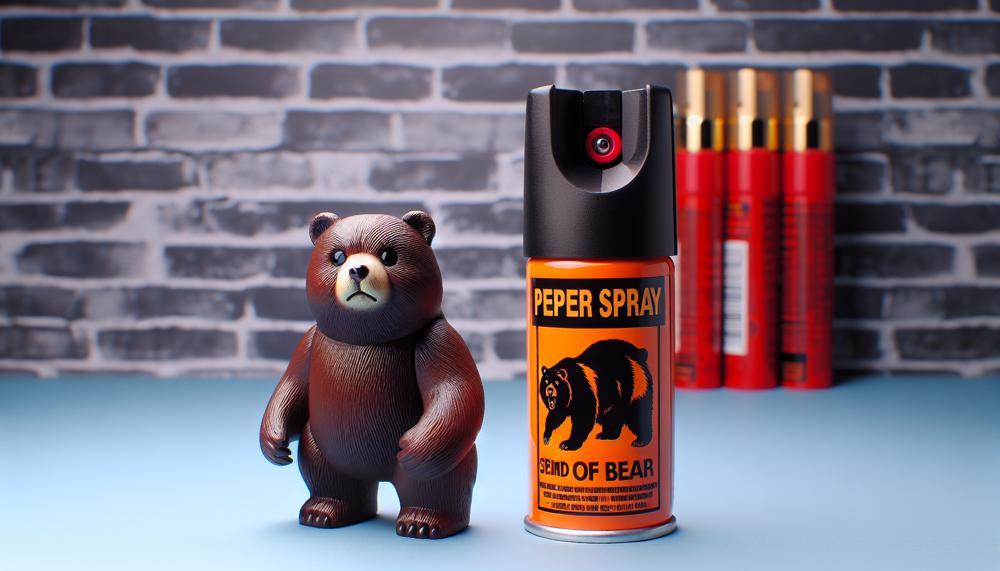
Bear spray is much more effective than pepper spray due to its higher concentration of active ingredients and longer range. In fact, a 20-year study in Alaska showed that bear spray successfully stopped undesirable bear behavior over 90% of the time.
On the other hand, pepper spray is designed for temporary discomfort in humans and should not be used as a substitute for bear spray in case of a bear encounter. To better understand the differences in effectiveness between these two sprays, let’s take a look at the table below:
| Bear Spray | Pepper Spray | |
|---|---|---|
| Active Ingredients | Capsaicin and related capsaicinoids | Capsaicin and related capsaicinoids |
| Concentration | Higher concentration of active ingredients | Lower concentration of active ingredients |
| Range | Longer range | Shorter range |
| Effectiveness Against Bears | Over 90% success rate in stopping undesirable behavior | Not recommended as a substitute for bear spray |
| Effectiveness Against Humans | Can cause severe discomfort for about 30 minutes or more | Effective non-lethal self-defense weapon |
As shown in the table, bear spray contains a higher concentration of active ingredients and has a longer range compared to pepper spray. This makes it highly effective against bears, with a success rate of over 90% in stopping undesirable behavior. However, pepper spray is still a suitable non-lethal self-defense weapon for humans, causing severe discomfort for about 30 minutes or more.
Pros and Cons of Bear Spray and Pepper Spray
While bear spray and pepper spray may seem similar, there are notable differences between the two. The table below outlines these differences in terms of their purpose, range, strength, and legality.
| Property | Bear Spray | Pepper Spray |
| Purpose | Designed for protection against bears | Meant for self-defense against human attackers |
| Range | Has a longer range of at least 30 ft (9 m) | Shorter range of 10-15 ft (3-4.5 m) |
| Strength | Contains a stronger concentration of active ingredients | Contains a milder concentration of active ingredients |
| Legality (in Canada) | Legal | Illegal |
As evidenced by the table, bear spray and pepper spray differ in their intended purpose. While bear spray is specifically designed for protection against bears, pepper spray is meant for self-defense against human attackers. This means that the concentration and strength of the active ingredients vary between the two sprays.
Additionally, the range of these sprays differs as well. Due to their larger size and tendency to attack from a greater distance, bears require a longer-range spray compared to humans. Therefore, bear spray typically has a range of at least 30 ft (9 m), while pepper spray ranges from 10-15 ft (3-4.5 m).
It’s also important to note that bear spray is legal in Canada, while pepper spray is not. This is because pepper spray can cause severe discomfort and temporary blindness in humans, making it a potentially dangerous weapon if used improperly.
Bear Spray vs. Pepper Spray: Which is More Effective?
The key differences between bear spray and pepper spray lie in their intended use, range, strength, and legality.
Bear spray is specifically designed to protect against aggressive bears and other large wild animals, while pepper spray is formulated for personal defense against human attackers.
Bear spray has a longer range of up to 30 feet and a higher concentration of capsaicinoids, making it more effective for wildlife encounters.
On the other hand, pepper spray may be more suitable for self-defense in close encounters with humans due to its shorter range of 6–12 feet and milder concentration. However, the effectiveness of each spray ultimately depends on the intended target and the user’s ability to handle the situation responsibly.
| Factor | Bear Spray | Pepper Spray |
| Purpose | Specifically designed for protection against aggressive bears and other large wild animals | Formulated for personal defense against human attackers |
| Range | Up to 30 feet | 6-12 feet |
| Strength | Higher concentration of capsaicinoids | Milder concentration of capsaicinoids |
| Legality in Canada | Legal as an animal repellent, but should be used responsibly and kept away from children. | Not legal due to potential danger to humans, with varying legality depending on state laws. |
| Suitable For | Wildlife encounters and situations where longer range is necessary. | Close encounters with humans. |
| Considerations | Should be stored responsibly and kept away from children. | Can have varying legality depending on state laws. |
When it comes to self-defense against bears, bear spray is generally considered more effective due to its longer range and higher concentration of capsaicinoids. However, it is important to note that both sprays should be used responsibly and in accordance with the law.
Factors such as personal preference and legal implications should also be considered when choosing between bear spray and pepper spray.
Conclusion
In conclusion, pepper spray has proven to be a formidable defense against bears in the wild.
Throughout this blog post, we have delved into the science behind its effectiveness, shared real-life success stories, provided tips for proper usage, debunked common misconceptions, and discussed alternative options for those who prefer non-lethal methods.
It is evident that pepper spray’s active ingredient, capsaicin, and its impressive range of 10–15 feet make it a powerful deterrent against even the most fearsome creatures.
However, it is crucial to remember that pepper spray should not be solely relied upon for protection and should always be used in conjunction with other safety measures.
